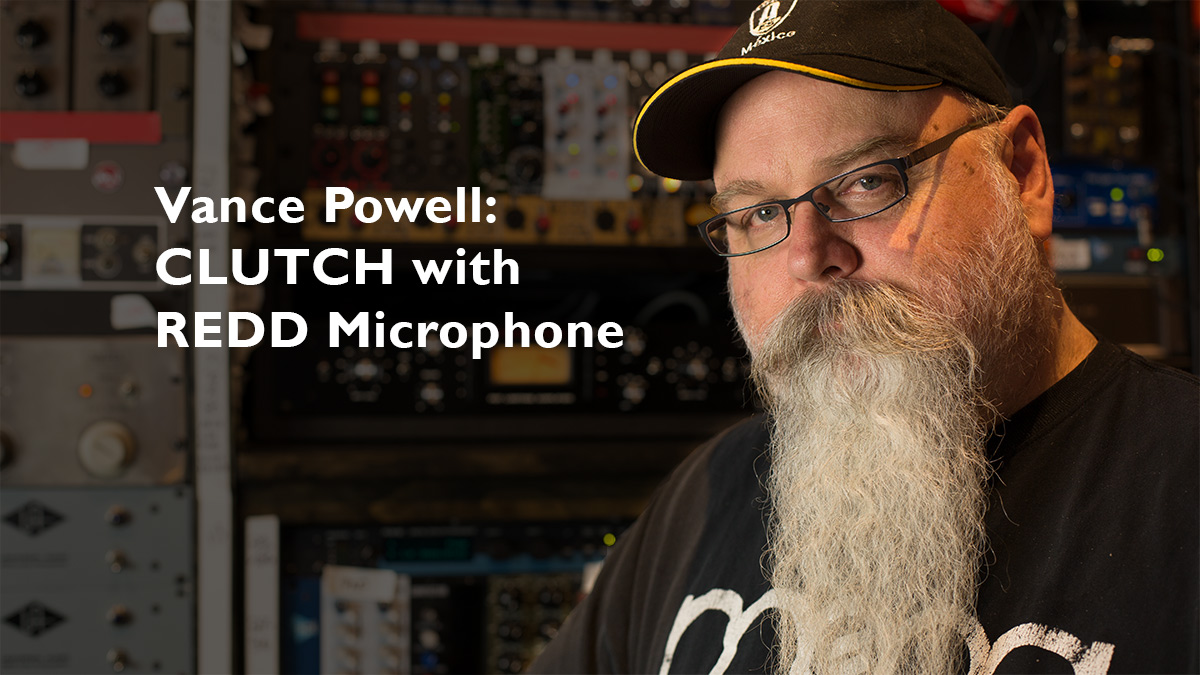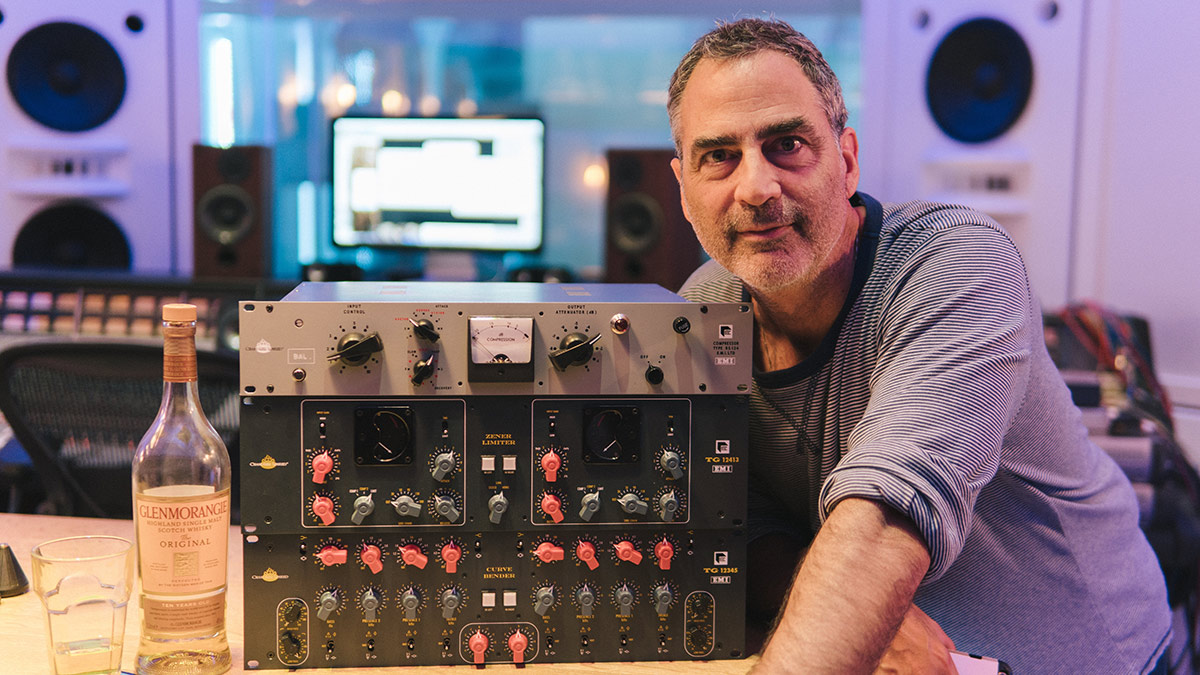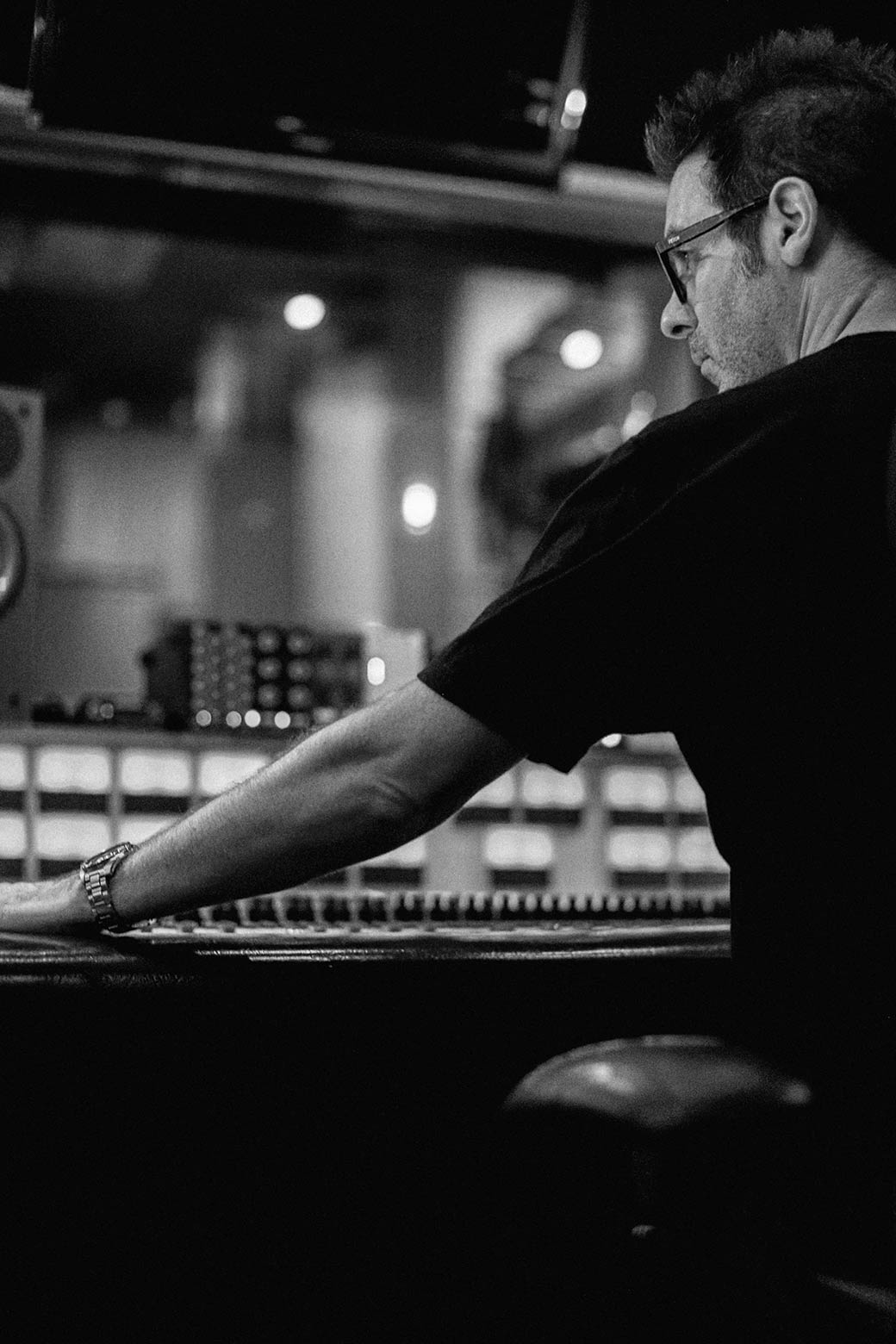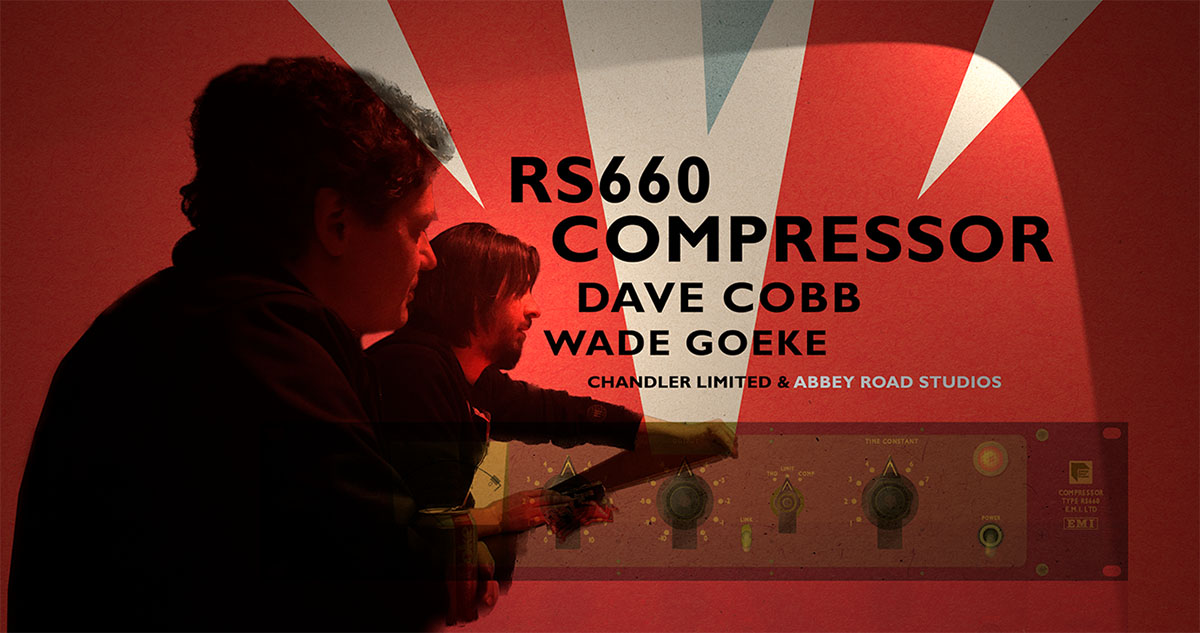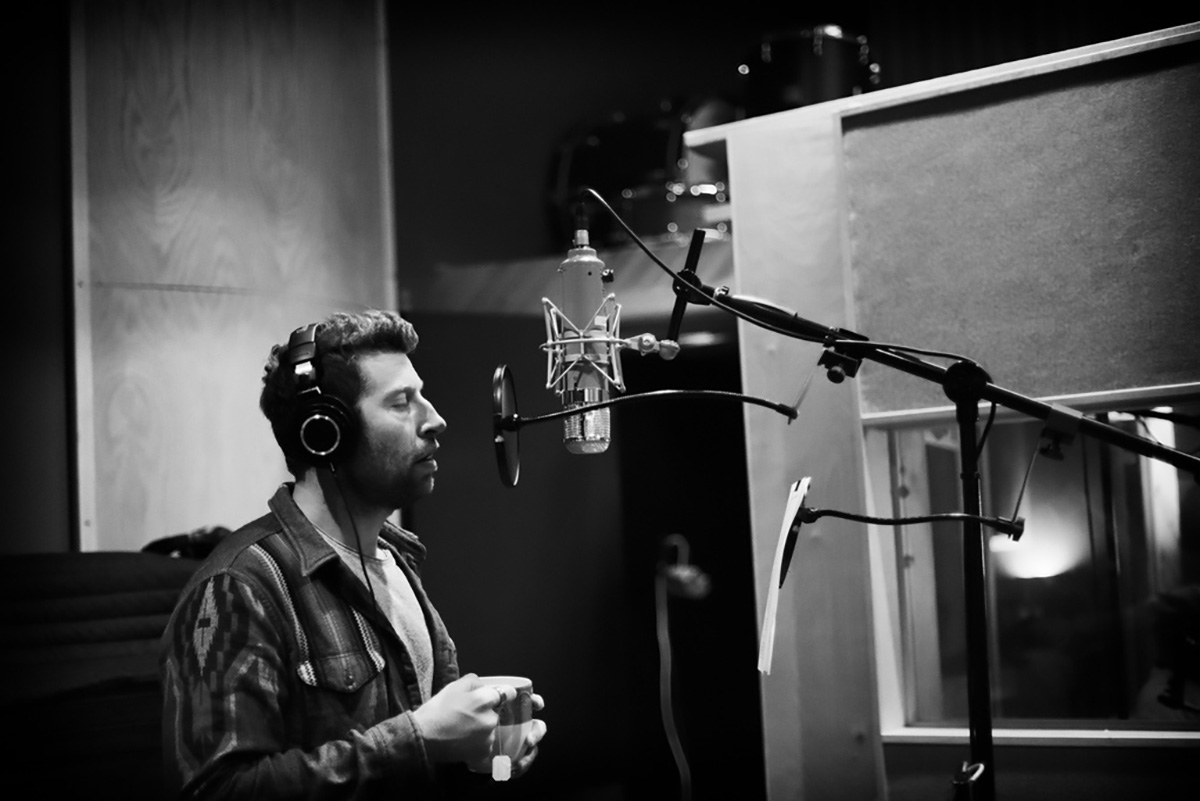A truly inspired vintage tube compressor!
Review by: Paul Vnuk Jr.
Recording Magazine
April 2023
The Chandler Limited RS660 tube compressor is the latest in an ongoing collaboration between Chandler Limited and England’s EMI Abbey Road Studios. The new RS660 is inspired by the two most used compressors at Abbey Road in the 1960s and 1970s: the Fairchild 660 Limiter and the RS124 compressor, and contains elements of each.
Simple yet Deep
The RS660 is housed in a 2U 19” enclosure dressed in “Fairchild brown.” It features three large and one small flat chicken knobs. The first two are smooth variable pots for Input (0–10) and Output (-10 to 0). Like many vintage compressors, you push the level into the box with the Input knob. It hits a variable threshold that clamps down with a knee (compression curve) that sharpens the harder you hit it with a signal. The Output is then used to attenuate the resulting sounds to your desired level.
The smaller knob is a 3-position switch labeled THD, LIMIT and COMP. In compression mode, the threshold is higher, and the onset of the compression is lower, with a smoother overall knee. Limiter mode ramps things up with a sharper knee and a lower threshold, causing a faster, aggressive grabby clamp down.
THD (total harmonic distortion) is not compression at all and simply drives sound into the unit’s circuits resulting in varied levels of saturation, overdrive and distortion. THD is excellent for adding drive and grit to snare drum, mono drum room mics, direct bass, vocals, electric piano, and digital soft synths.
Time Constant
The final 7-position stepped Time Constant switch is where the mojo happens. This control is taken from the Fairchild 660. Each position represents preselected attack and release times ranging from fast to slow. Here the RS660 commingles settings from the Fairchild 660 and the EMI RS124.
History tells us that most engineers leaned heaviest on Time Constants 1 and 2 on an original 660. As such, Chandler’s Founder and Chief Designer Wade Goeke took the attack and release properties of setting 1 and 2 and spread them out wider over settings 1–3 on the RS660. Setting 4—not found on either vintage unit—is the most gentle and forgiving of the bunch. Settings 5–7 are adapted from the slower, more heavy-handed, gooey RS124. While these are not exact to the RS124, I was impressed with how much of the slower RS124 vibe and feel the RS660 can achieve.
Balance
The RS660 also borrows the large VU gain reduction meter, Balance button, and set screw from the RS124 (see the RS660 manual for details on this feature).
Moving to the rear of the RS660 are balanced XLR I/O, a 1/4” TS input for linking two units in stereo, a 200/600Ω Output Impedance switch (200Ω is the vintage EMI setting, while 600Ω is designed for modern use), and an IEC power socket.
Inside
Like the Fairchild and the RS124, the RS660 is a Variable-Mu design. The most significant difference between the RS660 and the Fairchild 660 is that the Fairchild used ten tubes, with the gain reduction handled by four RCA 6386 tubes in a “push-pull” configuration. The RS660 uses three tubes, one of which is a (current) JJ 6386 with two amplifiers in a “push-pull” configuration, plus two internal custom transformers.
How Does It Feel?
The RS660 sound, like any good compressor, is all about reaction feel. Above all, the RS660 was born to be a vocal compressor. Making it sound bad on a voice is darn near impossible. It sounds excellent just tickling the meters in Time Constants 1–3 in compression or even limit mode, adding a bouncy, animated excitement. It’s also great for adding smooth levels of rich controlled vocal syrup on settings 5–7 in comp mode.
On drums, the RS660 utilizing fast limit settings can be so aggressive and pumping—as it pulls the space between notes forward—that it almost can sound like a reverse tape or, better yet, a classic pseudo-gated room effect. The RS660 also makes a tremendous parallel drum compressor hit hard while tucked behind the dry drum take. Here with slow speed clamped-down limit settings, the results are quite solid and heavy sounding.
The slower time settings in limit mode are also great for pinning aggressive rock and funk bass parts into a track. At the same time, I liked setting 3 in comp mode for gelling together the finger plucks and weight of an upright bass yet keeping it natural and lively sounding.
I also liked setting 3 in comp mode on both acoustic and electric piano tracks, while setting 4 in comp mode is nice on sources like violin, cello and acoustic guitar, where gentle control may be needed but not felt.
So does it get close to a Fairchild 660? I honestly have no idea. Beyond plugin recreations, I have never used one. Is it supposed to be a clone of said compressor? Nope. The RS660 is its own beast with its own highly versatile vintage flavor.
Final Thoughts
The RS660 has that balance of beautiful grit and opulence that makes classic (and modern) tube compressors so special. By offering well-chosen and implemented elements from two of the most unique compressors of all time, Chandler Limited has crafted something truly special in the RS660—arguably the nicest compressor in its line.
Words with Wade Goeke
So what is the RS660? Is it a Fairchild clone?
No, I wanted to come out with something other than another Fairchild copy that doesn’t sound like the original. The modern JJ 6386 tubes, while good, do not function like the old ones. They have five decibels less gain reduction than vintage tubes, so that’s a significant difference right off the bat. Also, the new issue tubes were much darker than the old ones. So to me, it’s literally impossible to make a new Fairchild with tubes that aren’t even close to what an old one was—the engine is literally not the same as it used to be.
Just like it’s impossible to remake a Neumann U 47 since the VF14 tubes are no longer made. That was a huge part of the sound. Can you make something with a K47 capsule and a different tube that sounds cool? Yes. But it’s not a U 47.
Also, using that number of tubes would be too expensive. I don’t think it’s fair to go out and say, “Yeah, we have a new compressor; it’s $13,000.” So I was like, how can I approach this by using the new tubes, but adjusting the circuits so that it still produces some of those vintage tones.
How does the RS124 factor in?
I was trying to capture the sound of the 6386 tube, but add some of that functionality and tonality of the RS124. I started with an RS124 unit and adjusted the circuit to run the 6386 tubes until it was a nice mixture of both qualities. It’s like how the old Abbey Road engineers took and re-designed an Altec 436 into the RS124. I took my RS124 and re-designed it into the RS660.
How does it compare to the Fairchild 660?
Concerning the Fairchild, I think it’s better. I’m supposed to say that, right? But, here’s my reasoning. The Fairchild is a very specific sound—that sort of aggression and brightness. I’ve had many producer friends tell me that they pretty much use their Fairchild for one specific thing.
I didn’t want to do that. I wanted a compressor that was usable on everything. And this compressor, maybe more than any compressor we have made, is usable on any source.
Tell me about your chosen Time Constants.
Many engineers, like my friend Dave Cobb, seem to like settings 1 and 2 on the old Fairchild, especially setting 2. And in poking around, we just wanted to get more variety out of the best parts of settings 1 and 2. Our 1, 2 and 3 are all in the zone of Fairchild 1 and 2.
So, you took 1 and 2 and expanded it to 3?
Yeah. Then the slower ones, 5–7, are meant to be the vintage glue, RS124 sound—so slow.
But also not exactly an RS124?
You can get close, but it’s still not the same because of its different tubes and such. The tube alone will make it feel and respond differently. At this point, it’s probably the compressor I use the most because it’s so versatile. It can be quite colorful or stay out of the way but still sound full.
It’s a great new design, and you and Abbey Road should be proud!
Thanks, man.
Price: $3,399

